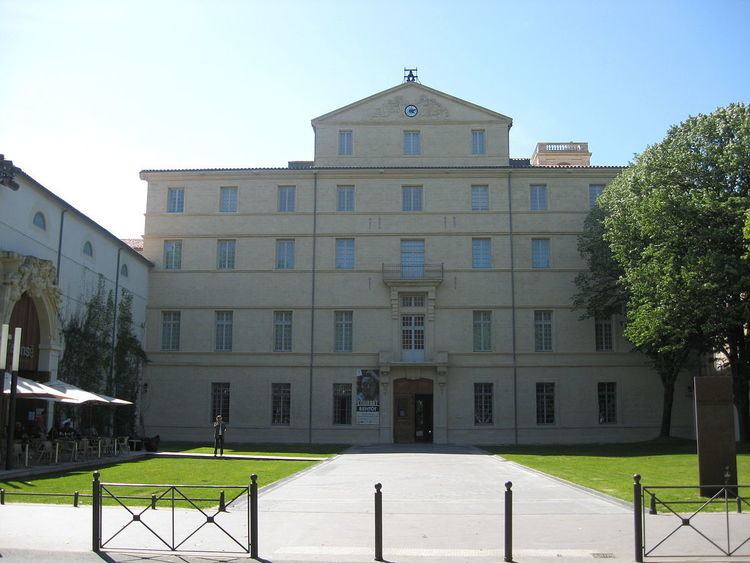Phone +33 4 67 14 83 00 | ||
 | ||
Hours Closing soon · 10AM–6PMWednesday10AM–6PMThursday10AM–6PMFriday10AM–6PMSaturday10AM–6PMSunday10AM–6PMMondayClosedTuesday10AM–6PMSuggest an edit Artwork La rencontre (Bonjour Monsieur Courbet), The Wrath of Achilles Similar Place de la Comédie, Porte du Peyrou, Montpellier Cathedral, Jardin des plantes de Montpellier, Corum Profiles | ||
Le mus e fabre de montpellier
The Musée Fabre is a museum in the southern French city of Montpellier, capital of the Hérault département.
Contents
- Le mus e fabre de montpellier
- History
- Collection
- Painting from 15th to 18th century
- Painting from the 19th and 20th century with a number of Fauvist painters
- Sculpture
- References
The museum was founded by François-Xavier Fabre, a Montpellier painter, in 1825. Beginning in 2003, the museum underwent a 61.2 million euro renovation, which was completed in January 2007. It is one of the main sights of Montpellier and close to the city's main square, the Place de la Comédie. The museum's national importance is recognised by it being classified as a Musée de France by the French Ministry of Culture.
History
The town of Montpellier was given thirty paintings in 1802 which formed the basis of a modest municipal museum under the Empire, moving between various temporary sites. In 1825, the town council accepted a large donation of works from Fabre and the museum was installed in the refurbished Hôtel de Massillian, officially opened on 3 December 1828. Fabre's generosity led others to follow his example, notably Antoine Valedau who donated his collection of Dutch and Flemish masters to the city. On the death of Fabre in 1837, a legacy of more than a hundred pictures and drawings completed the collection.
In 1864, Jules Bonnet-Mel, an art collector from Pézenas, bequeathed 400 drawings and 28 paintings. In 1868, Alfred Bruyas offered the works from his private gallery to the city. He is credited with having moved the museum collection into the modern era. In 1870, Jules Canonge, from Nîmes, gave a collection of more than 350 drawings. A legacy of Bruyas of more than 200 works completed his gift in 1877.
In 1968, Mme Sabatier d'Espeyran in accordance with the will of her husband, a diplomat and great bibliophile, gave to the city their hôtel particulier, built under the Third Republic along with its contents.
Around 2001, the Library moved out of the complex, freeing a sizeable area and offering the chance to carry out a major modernisation and enhancement of the building. This took four years and included a whole new wing. The building re-opened in February 2007.
Collection
On display are ceramics from Greece and the rest of Europe. Furthermore, the museum has a large collection of paintings from the 17th until the 19th century, with a large representation of the luminophiles movement. There is also sculpture.
Painting from 15th to 18th century
Here are some of the most famous painters featured in the museum.
French :
Outside France :
